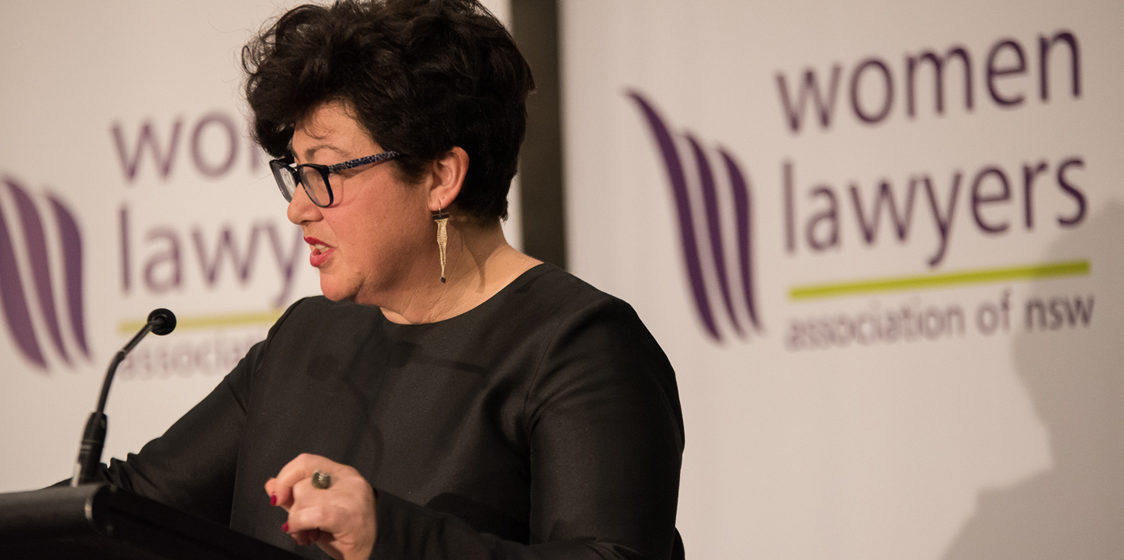Presenteeism, long hours and unconscious biases around “merit” have long been barriers to women’s success in the legal profession. The President of the Women Lawyers Association of NSW, Larissa Andelman, argues that law firms and leaders need to rethink working structures in order to realise genuine action for women.
When Janet Coombs enrolled at university in 1949, she was told that women couldn’t study law, so she studied for an Arts degree.
When she finished the Arts degree, she realised that in fact women could study law. She enrolled, finished the degree, and went on to practise as a barrister at the NSW Bar for nearly 40 years. She was the only female from her graduate year that practised law.
Much has improved since that time. Women are no longer denied entry to any education facility or workplace. In fact, now there are now more women graduating as lawyers than men, and this has been the case since 1997.
Despite the evidence, some people continue to believe it is just a matter of time before women hold high levels of power in equal numbers as senior counsel, judges, and equity partners in law firms.
In 1997, the Honourable Justice Mary Gaudron, the first female to be appointed to the High Court of Australia, gave a speech at the Australian Women Lawyers Conference. She referred to a note to a fellow High Court judge that said, “The trouble with the women of my generation is that we thought if we knocked the doors down, success would be inevitable. The trouble with men of your generation is that so many still think that if they hold the doors open, we will be forever grateful.”
The idea that women could enter the house but could not re-arrange the furniture, let alone paint the walls, has persisted since that time. Yet women do bring a distinct contribution to law because of their particular experience and background. The difference makes the profession stronger and more able to be an effective servant of justice on which our economy and society depend.
Despite the early adopters of gender equality in the legal profession, there continues to be a belief that women should be prepared to work in the profession as designed and judged by men, and that for women to succeed they need to learn to fit into the acceptable cultural and structural model.
Women of my generation understand that for them to thrive, succeed, and reach the highest levels within the profession, the profession needs to change to recognise that an ideal worker is not a man, available 24/7, willing and able to dedicate his entire working life to his job because he has a wife at home taking care of everything.
This is not some far-fetched example. It perfectly describes the position of our current Prime Minister and the Treasurer, who, despite having young families, because of their privilege, are not practically encumbered by such distractions.
In 2019, some law firms provided training – for women only – on how to “lean in” and be more assertive and confident. I have no issue with training. But why target women? It sends a clear message that women are not good enough and need additional assistance and support to fit in. Some other misguided gender hype in 2019 included glossy social media campaigns announcing commencement of some unspecified discussion to occur at some time in the future as to improving gender representation and diversity. Overwhelmingly, these law firms are controlled by men at the board and equity partnership level.
What would be much more useful is behavioural face-to-face training, targeting people in leadership positions about the extent and prevalence of sexual harassment, bullying, family responsibilities and pregnancy-related discrimination, and a requirement that those in leadership positions be held accountable through remuneration and other means as to maintaining a respectful workplace culture.
Last year, the Prime Minister said (most unhelpfully), “I want to see more women in our parliament on merit.”
On merit – that’s the key. For good measure, on International Women’s Day last year he added, “We want to see women rise. But we don’t want to see women rise only on the basis of others doing worse.”
The Treasurer said that the “gender pay gap has closed”. Unfortunately, this is a clear example of fake news, as the gender pay gap in the legal profession is steady at about 20 per cent and much higher for female barristers.
The women at the NSW Bar are unable to break the 25 per cent mark. It is not only because women are choosing to not come to the Bar, but also because women are leaving the Bar. For women in private law firms, the position is not much rosier. The percentage of women in equity partnership is very difficult to measure because it is secret. On our best estimates, based on data collected over the last six years, the percentage is less than 20 per cent. The available data suggests the position of women on law firm boards is lower than for ASX 200 companies.
As a number of early adopters in the legal profession have recognised, there is a need for a re-think as to the workplace structures in which we work. It is not rocket science, but it does involve recognising that the concept of merit has an inherent discriminatory compounder which is stacked against women, as it fails to take into account the fact that most women don’t have a stay-at-home wife. In fact, the majority of men don’t have such infrastructure and they too want a workplace which is flexible and recognises and respects caring responsibilities.
Since 1952, the Women Lawyers Association of NSW has advocated for women in the legal profession. In 2020, the focus is assisting our members who are the early adopters to become the majority. Change within the legal profession comes substantially from external factors such as international and national regulatory obligations and the demands from clients. Other professional services similar to the legal profession have innovated faster. The technology is available for people to perform work from home and other locations. The age of presenteeism and the six-minute billing block are outmoded and inefficient. The laggards who fail to innovate and transform will not see success.
As Mary Gaudron said at the 50th anniversary of Women Lawyers Association of NSW in 2002, women must make the profession work for all of us and in the interests of justice.
“We must refuse to be exploited, demeaned and humiliated. We need only dare to be different and have confidence in ourselves,” she said.
Some 20 years later, the legal profession is female dominated, but there is only glacial change as to the shift in power. Women are demanding change not only for themselves but for their partners who also want to keep their families strong, participate in their community, and, perhaps most importantly, to futureproof the profession. The interests of justice demand it.
At a time of rapid political, social and economic change, the law is indispensable to a rule-based, well-ordered society. It is only just that the legal profession is representative of our society. Gender is only one of these attributes.




